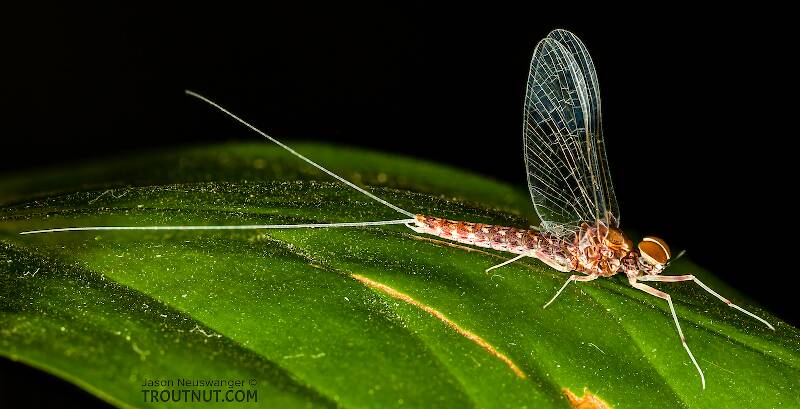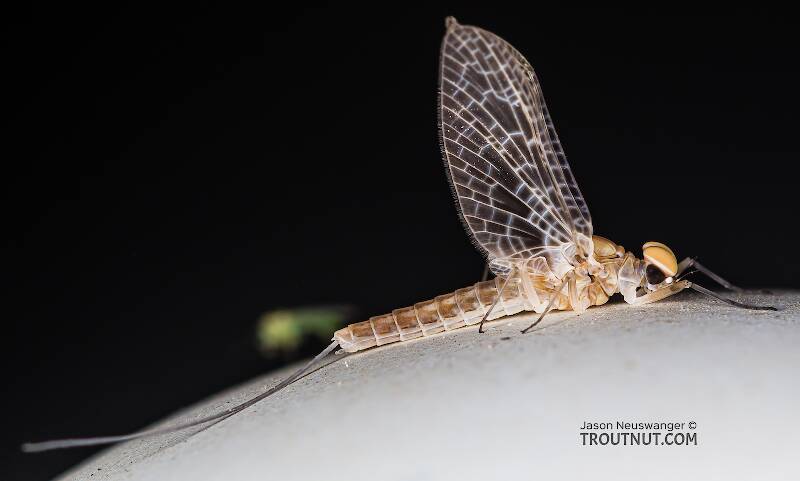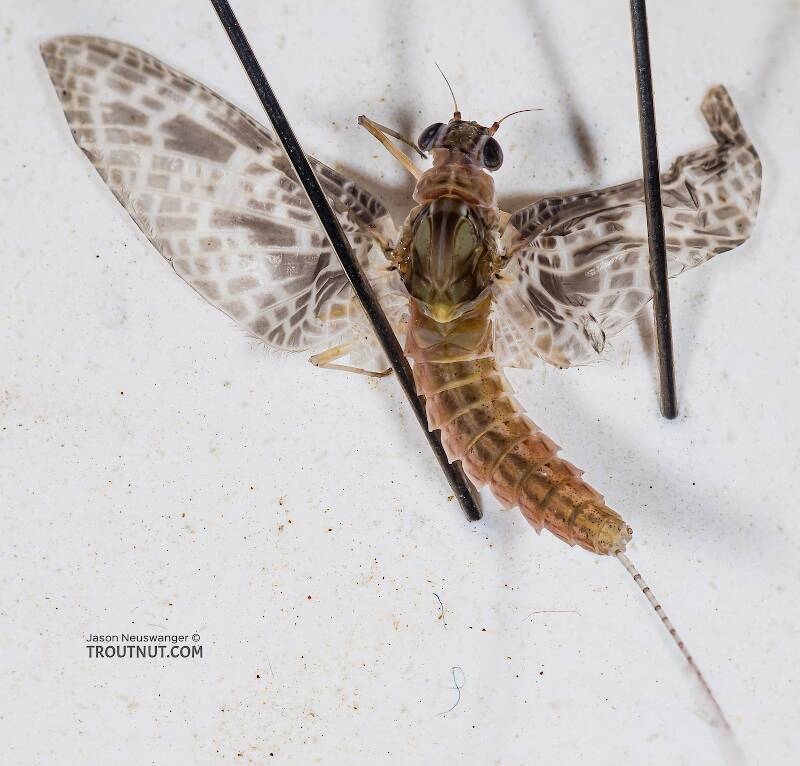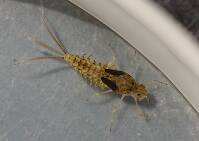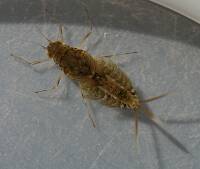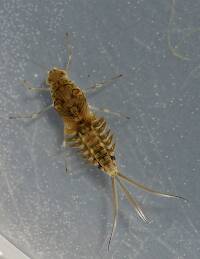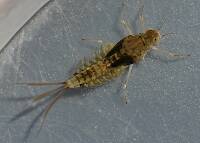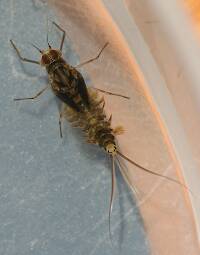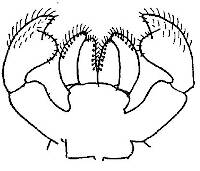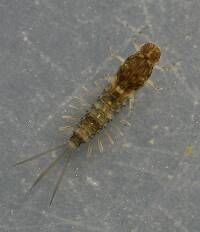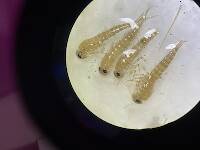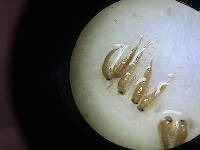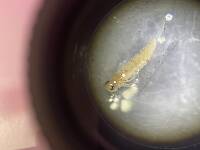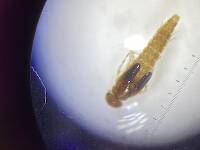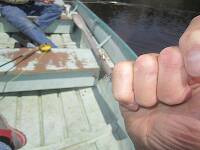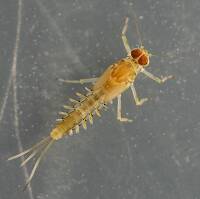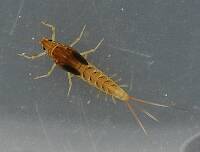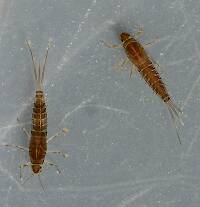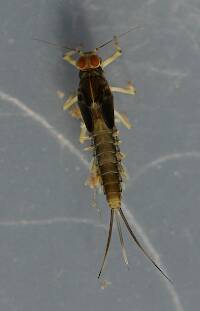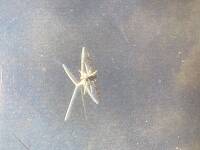
Hex Mayflies
Hexagenia limbata
The famous nocturnal Hex hatch of the Midwest (and a few other lucky locations) stirs to the surface mythically large brown trout that only touch streamers for the rest of the year.
Featured on the forum

This one seems to lead to Couplet 35 of the Key to Genera of Perlodidae Nymphs and the genus Isoperla, but I'm skeptical that's correct based on the general look. I need to get it under the microscope to review several choices in the key, and it'll probably end up a different Perlodidae.

Troutnut is a project started in 2003 by salmonid ecologist Jason "Troutnut" Neuswanger to help anglers and
fly tyers unabashedly embrace the entomological side of the sport. Learn more about Troutnut or
support the project for an enhanced experience here.
This topic is about the Mayfly Genus Callibaetis
The speckle winged Callibaetis genus contains on average the largest species in the Baetidae family with hatches ranging in size from 20 to 12 (6mm to 12mm). However, most can be matched with 14 and 16 imitations. They reside only in very slow weedy sections of rivers or lakes and ponds.The most important are the sub-species Callibaetis ferrugineus ferrugineus in the East and Midwest and Callibaetis ferrugineus hageni in the West. It is in the West however, where this genus achieves its densest populations and most significant hatches. Other important western species also happen to be at both sides of the size scale. The outsized Callibaetis californicus can produce excellent hatches. The diminutive Callibaetis pictus can also be locally prolific, especially at higher elevations.
The duns are easily recognized by their speckled bodies and distinctive wings usually featuring a dark background overlaid with white veins. Female spinners are also easy to recognize with their clear wing's leading edges marked with dark blotches -- see the pictures.
Example specimens
Royal_Coach on Jan 15, 2018January 15th, 2018, 2:04 pm EST
every book/article I read says Baetidae is the most imporant family and Callibaetis the most important genus of mayfly. Why? Does this just mean they are the most prolific? Am I not likely to encounter any other family/genus on a western river?
Millcreek on Jan 15, 2018January 15th, 2018, 5:09 pm EST
Mark - Callibaetis probably won't be found in rivers except in slackwater areas. In lakes or beaver ponds it can be an important hatch. Members of Baetidae can be very prolific in rivers, especially in California. As far as other species that can be locally abundant in California there are Epeorus, Ephemerella, Drunella, Tricorythodes, Choroterpes, Paraletophlebia and many others that can be seasonally important.
"If we knew what it was we were doing, it would not be called research, would it?"
-Albert Einstein
-Albert Einstein
Quick Reply
Related Discussions
Topic
Replies
Last Reply
11
Apr 24, 2014
by Brookyman
by Brookyman


